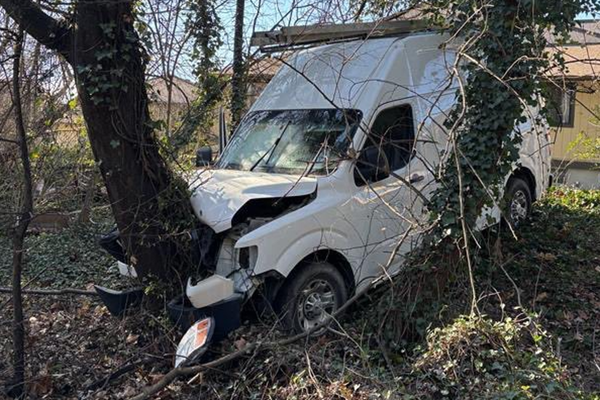
Since his first day in office, Donald Trump has zeroed in on so-called “sanctuary cities”, pledging to withhold federal funding and ensure they are eliminated as part of his administration’s massive crackdown on immigrants.
On Monday, he took yet another swing, directing his administration to publish a list of state and local jurisdictions that “obstruct the enforcement of federal immigration laws”. The order also calls on the government to identify federal funds that can be terminated as a consequence for cities that identify as sanctuary jurisdictions.
It’s the latest salvo in a long-running feud between the White House – which has described sanctuary policies as a “lawless insurrection” – and state and local lawmakers who have vowed to protect the thousands of undocumented immigrants living in their communities.
Here’s what to know about the issues and what Trump’s latest actions could mean.
What is a sanctuary city?
There’s no clear definition of what it means for a state or city government to be a “sanctuary” jurisdiction. Sanctuary policies include laws allowing undocumented immigrants to acquire municipal IDs or driver’s licenses, ensuring that immigrants have equal access to local resources including education and food banks.
Other sanctuary policies limit state and local cooperation with US Immigration and Customs Enforcement (Ice), the federal agency that enforces immigration law. Some sanctuary cities prohibit “287(g)” agreements, through which Ice deputizes local police to enforce federal immigration law. Others prohibit local immigration detention centers, restrict police from asking people about immigration status and restrict Ice agents from entering jails without a judicial warrant.
The policies saw a surge in popularity during Trump’s first term, but their origins date back decades. In the 1960s, conscientious objectors of the Vietnam war sought refuge in churches in Berkeley, California, which has been described as the birthplace of the sanctuary movement. Religious institutions in the city later began housing refugees from Central and South America, according to a report from Berkeleyside.
While often associated with west coast liberal hotspots such as San Francisco and Los Angeles, today jurisdictions across the US have sanctuary policies, from New Mexico to Illinois and New Orleans.
Trump has long argued that sanctuary designations endanger US citizens and protect criminals, but research has found no correlation between the implementation of such policies and increased crime rates. In fact, sanctuary jurisdictions report fewer crimes, less poverty and unemployment, and higher median household income, according to one 2017 study. Supporters of the policies, including some police officials, argue that they help build trust in local law enforcement.
What does the designation mean for federal immigration enforcement?
The Trump administration has been especially critical of sanctuary cities that refuse to comply with Ice “detainers” or “immigration holds” – an official but non-binding request from Ice asking a state or local law enforcement agency to keep custody of a person for up to 48 hours beyond the time they otherwise would have been released.
Normally, local governments can’t hold a person in jail or prison after they are acquitted, have completed their sentence or have been granted bail. Ice can send out detainer requests if they suspect that someone who is about to be released is a noncitizen – and, if the local police comply, use this extra time to figure out whether that person is a noncitizen that Ice can deport.
The administration has claimed that these detainer requests are a key tool in immigration enforcement, though in an analysis, Trac found that only about 1% of Ice removals from 2006 through 2017 were connected to the use of detainers.
All jails, regardless of local sanctuary policies, send out fingerprint records for federal background checks – which Ice agents can easily use to track and apprehend noncitizens upon release from local custody.
“If Ice or any member of the public wants to look up to see if somebody is being held in our department of corrections or in our jail, there’s a public database for them to check,” the attorney general of sanctuary state Illinois, Kwame Raoul, told the Guardian in January.
The agency, he said, doesn’t necessarily need states to share any more data or comply with detainers in order to arrest or deport people: “The reality is, Ice is sophisticated enough to know.”
What has Trump done so far to crack down on sanctuary cities, and what do his latest actions mean?
The day of his 2025 inauguration, Trump signed an order directing the attorney general and homeland security secretary to withhold federal funding from jurisdictions with laws limiting or preventing cooperation with US immigration officials – and ordered the federal government to ensure funds don’t “abet so-called ‘sanctuary’ policies”.
But his fight against the jurisdictions has encountered some hurdles. Last week, a judge ruled the Trump administration cannot deny federal funds to sanctuary cities and counties, issuing a temporary injunction in response to a lawsuit filed by San Francisco, Santa Clara county and more than a dozen other municipalities with such policies.
Despite the ruling, Trump signed his latest executive order on Monday. In addition to a list of sanctuary jurisdictions, Trump’s latest order also instructs his administration to “develop mechanisms” to prevent undocumented immigrants from receiving federal public benefits, and penalize universities for providing in-state tuition to undocumented students.
The immigration advocacy group FWD.us described Trump’s order as “cruel, counterproductive, and deeply harmful to our shared future”.
“Blocking states from offering in-state tuition to undocumented students who have lived in these states for most of their lives would purposefully lock countless of individuals out of the higher education system, waste years of educational investment, hurt local economies, and rob all Americans of future leaders,” the organization’s president, Todd Schulte, said in a statement.
Another order Trump signed on Monday includes a directive to “[hold] state and local officials accountable” for “willfully and unlawfully [directing] the obstruction of criminal law”.
How are sanctuary cities pushing back?
As Trump ramps up attacks on jurisdictions with sanctuary policies, some are responding defiantly.
San Francisco, Santa Clara county and other municipalities sued the federal government over Trump’s executive orders, arguing that his administration was attempting to “commandeer local police officers as federal Ice agents while strong-arming local officials with threats of withholding federal funds”. Meanwhile, Los Angeles in November passed an ordinance enshrining its sanctuary status, which bans any city resources from being used in immigration enforcement.
During a recent congressional hearing, the mayors of major US cities, including Denver, Chicago and Boston, defended the policies. Brandon Johnson, the Chicago mayor, argued the policies had made it so residents could more freely cooperate with police without fear and, ultimately, made his city safer. “We do not harbor criminals,” he said. “We arrest them.”
The ACLU has said that the president’s orders have “no legal basis” and are instead part of his “relentless campaign to attack the integrity of our legal system and separation of powers by targeting judges, lawyers, and other officials who refuse to comply with his extreme agenda”.
“These executive orders are just the latest escalation in the Trump administration’s shakedown of cities, states, and elected officials that refuse to offer up local resources for the administration’s mass deportation and detention agenda,” Naureen Shah, the director of government affairs for the ACLU’s equality division, said in a statement.







